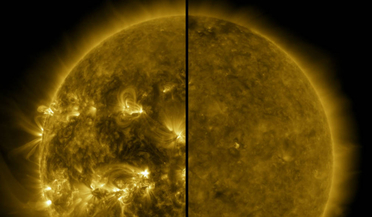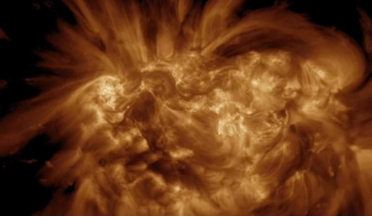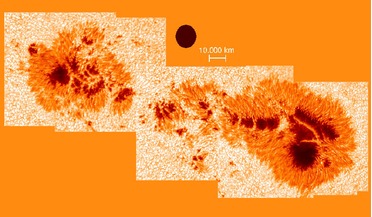 16 September 2020
The Sun enters a new cycle and will reach a peak in 2025
16 September 2020
The Sun enters a new cycle and will reach a peak in 2025
...; Multi-slit Solar Explorer (MUSE); Auroral Reconstruction CubeSwarm (ARCS) and Solaris: Revealing the Mysteries of the Sun’s Poles. The proposals, which are funded by NASA’s Heliophysics Explorers’ programme, will receive $1.25 million to conduct...
 10 August 2018
Fiery inferno awaits NASA's Parker Solar Probe
10 August 2018
Fiery inferno awaits NASA's Parker Solar Probe
... searing outer layers to get within 6 million kilometres (4 million miles) of the sun’s surface. At this point, the probe will truly touch the Sun, or at least the tenuous solar plasma that it is made of charged particles (protons and electrons) and...
 April 2025
Life in the Sun’s atmosphere - the looming threat of solar storms
April 2025
Life in the Sun’s atmosphere - the looming threat of solar storms
... improve resilience. As Carnegie-Brown emphasised, “Now is a good time to be considering this issue. This summer marks the peak of the Sun’s 11-year activity cycle, or ‘solar maximum,’ a period when space weather events are more frequent and intense...
 11 July 2018
High hopes for Hi-C mission to reveal secrets of the Sun
11 July 2018
High hopes for Hi-C mission to reveal secrets of the Sun
... solar corona to show previously unseen magnetic activity. It is thought that the Sun’s magnetic field plays a role in heating the gas in the atmosphere, which is often released into the solar system as hot winds that reach speeds of a million miles...
 08 April 2019
Rain on the Sun links long-standing solar mysteries
08 April 2019
Rain on the Sun links long-standing solar mysteries
... magnetic field loops that have emerged from the Sun’s surface. When the plasma reaches the peak of the loop, far from the initial heat source, it cools and then condenses. Like the wet H2O variety on our planet, gravity then...
 02 December 2016
GREGOR helps scientists take a closer look at the Sun
02 December 2016
GREGOR helps scientists take a closer look at the Sun
... has just been released in a special issue of Astronomy & Astrophysics. Research has revealed for the first time that even in the most quiet areas on the Sun, 80% of the area is covered with magnetic fields. Light bridges were also given a thorough...